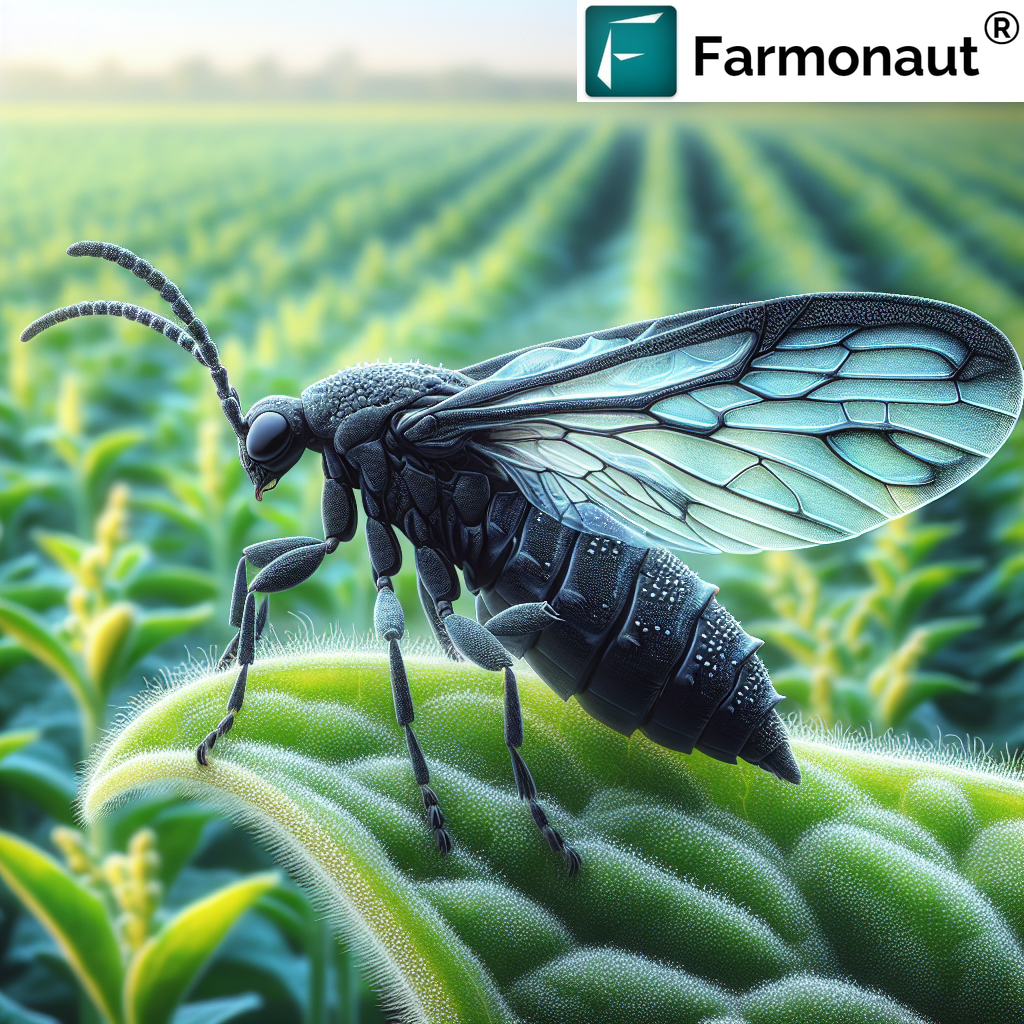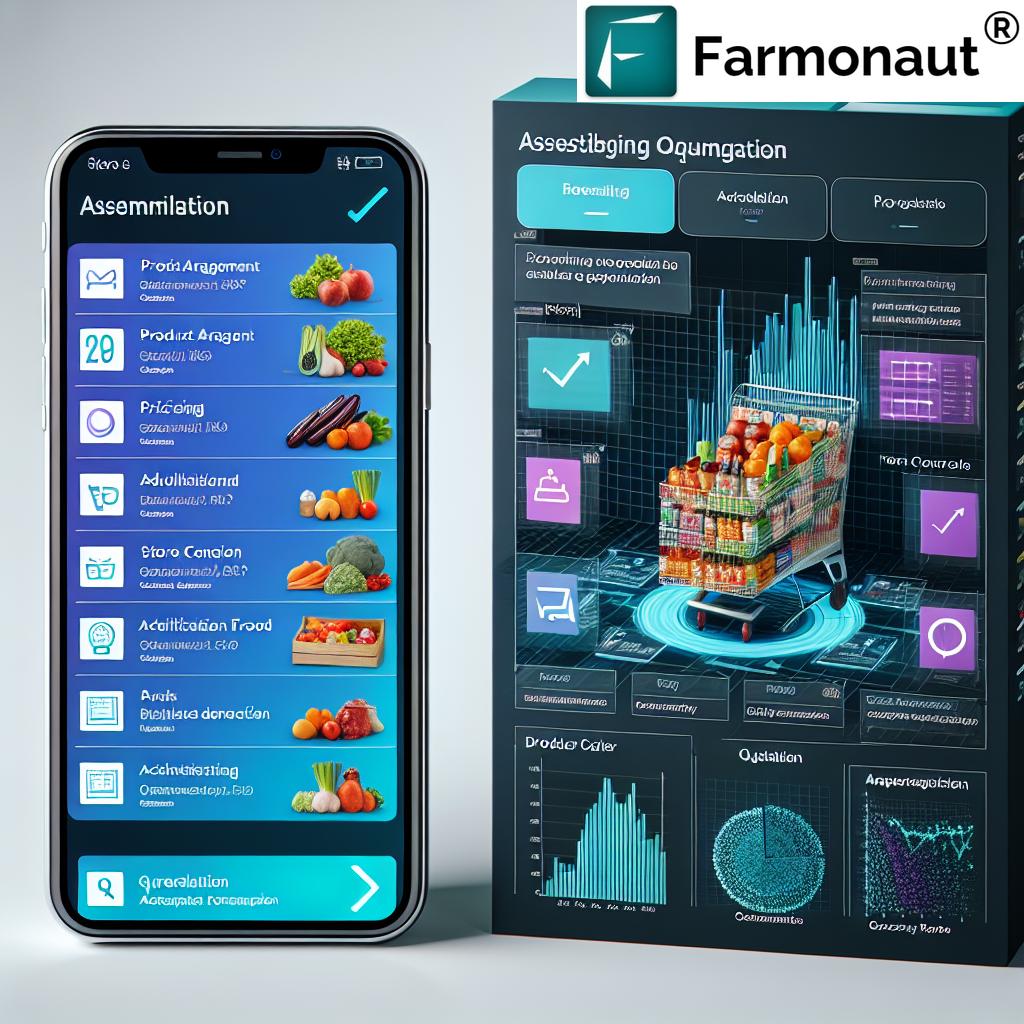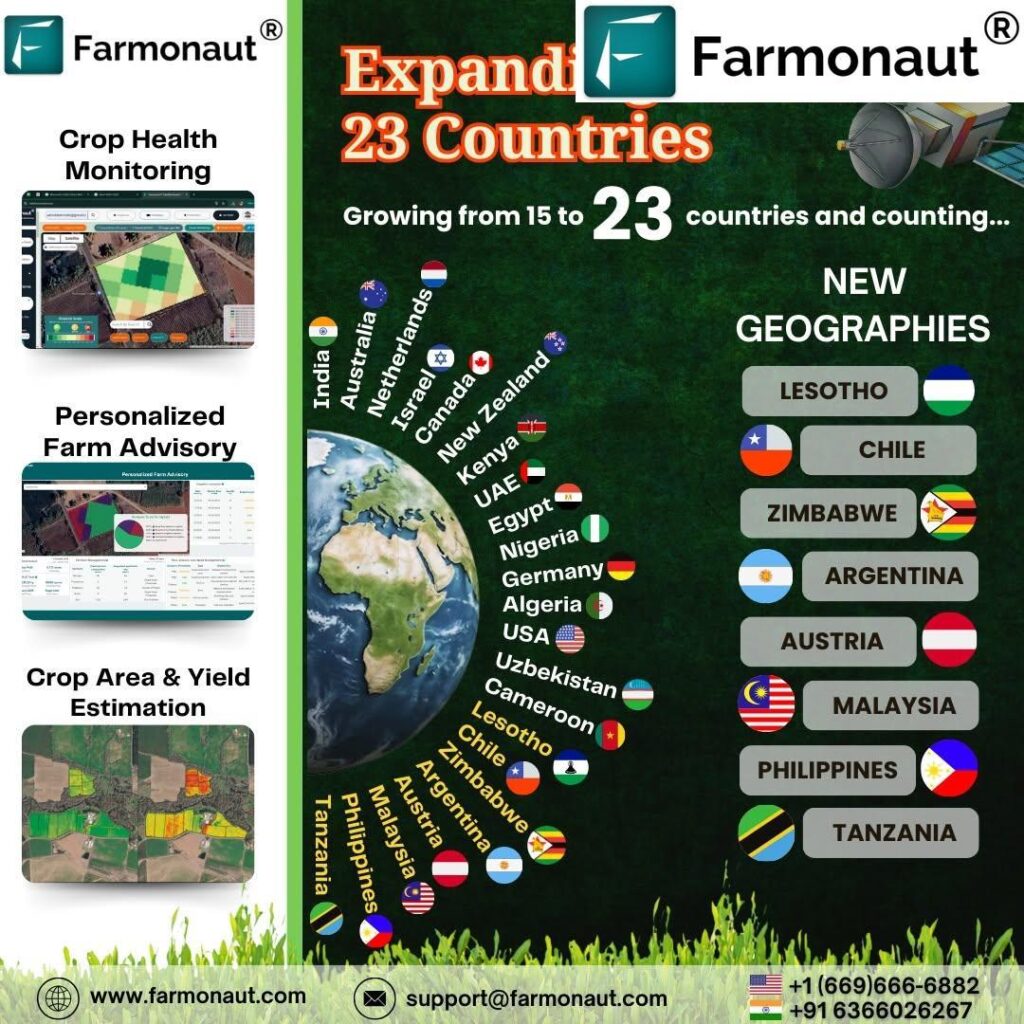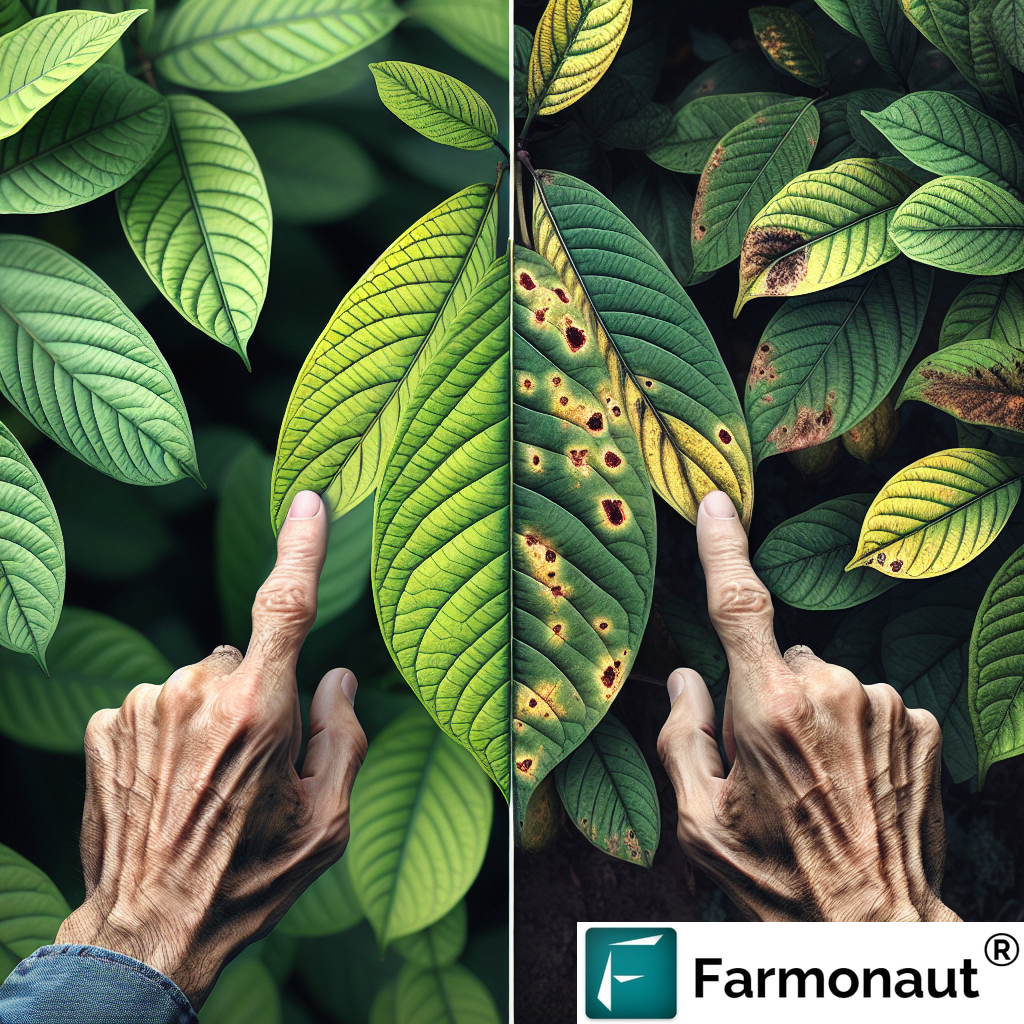Battling Black Winged Aphids: Expert Tips for Identifying and Controlling Winged Black Aphid Infestations

In the ever-evolving world of agriculture, farmers face numerous challenges, and one of the most persistent threats to crop health is the presence of pests. Among these, the black winged aphid, also known as the winged black aphid, stands out as a particularly troublesome adversary. At Farmonaut, we understand the importance of staying ahead of these threats, which is why we’ve compiled this comprehensive guide to help you identify, manage, and control black winged aphid infestations.
Understanding the Black Winged Aphid
The black winged aphid is a small, soft-bodied insect that belongs to the family Aphididae. These pests are known for their ability to reproduce rapidly and cause significant damage to a wide range of crops. Let’s delve deeper into the characteristics and behavior of these tiny yet formidable foes.
Identification
- Size: Typically 1-3 mm in length
- Color: Black or dark brown
- Wings: Transparent with dark veins
- Antennae: Long and segmented
- Body shape: Pear-shaped
The winged black aphid is distinguishable from its wingless counterparts by the presence of two pairs of delicate, transparent wings. These wings allow the aphids to migrate to new host plants, making them particularly troublesome for farmers managing large areas of crops.
Life Cycle
Understanding the life cycle of the black winged aphid is crucial for effective pest management. These insects have a complex reproductive strategy that allows them to multiply rapidly under favorable conditions.
- Egg stage: In colder climates, aphids overwinter as eggs on host plants.
- Nymph stage: Eggs hatch into nymphs, which undergo several molts before reaching adulthood.
- Adult stage: Adults can be either wingless or winged, depending on environmental factors.
- Reproduction: Female aphids can reproduce parthenogenetically, giving birth to live young without mating.
The ability of black winged aphids to produce live young and their rapid maturation rate (as little as 7-10 days) contribute to their status as a significant agricultural pest.
The Impact of Black Winged Aphids on Crops
The damage caused by black winged aphids can be severe and wide-ranging. These pests affect various crops, including cereals, legumes, fruits, and vegetables. Understanding the extent of their impact is crucial for developing effective management strategies.
Direct Damage
- Sap feeding: Aphids use their piercing-sucking mouthparts to extract plant sap, weakening the host plant.
- Leaf distortion: Feeding can cause leaves to curl, wilt, or become discolored.
- Stunted growth: Severe infestations can lead to reduced plant growth and yield losses.
- Honeydew production: Aphids excrete a sticky substance called honeydew, which can promote the growth of sooty mold on leaves.
Indirect Damage
- Virus transmission: Black winged aphids are known vectors for numerous plant viruses.
- Secondary pest attraction: The honeydew produced by aphids can attract other pests, such as ants.
- Reduced photosynthesis: Sooty mold growth on honeydew-covered leaves can interfere with photosynthesis.
The combination of direct and indirect damage can lead to significant economic losses for farmers if left unchecked.
Monitoring and Early Detection
At Farmonaut, we believe that early detection is key to managing black winged aphid infestations effectively. Our satellite-based crop health monitoring system plays a crucial role in identifying potential pest problems before they become severe.
Satellite-Based Monitoring
Our advanced satellite technology allows us to monitor vast areas of farmland efficiently. By analyzing multispectral imagery, we can detect subtle changes in crop health that may indicate the presence of pests like the black winged aphid.
- Vegetation health indices (e.g., NDVI) to identify stressed plants
- Regular monitoring to track changes over time
- Early warning alerts for potential pest infestations
To access our satellite-based monitoring services, visit Farmonaut’s app or explore our API services for integration with your existing systems.
Field Scouting
While satellite monitoring provides valuable insights, regular field scouting remains an essential part of pest management. Here are some tips for effective scouting:
- Inspect the undersides of leaves, where aphids often congregate
- Look for signs of damage, such as curled or distorted leaves
- Check for the presence of winged aphids, which may indicate a growing population
- Use yellow sticky traps to monitor aphid movement
By combining satellite monitoring with regular field scouting, farmers can stay ahead of potential black winged aphid infestations and take timely action.
Integrated Pest Management Strategies
At Farmonaut, we advocate for an integrated approach to pest management that combines various strategies to control black winged aphid populations effectively while minimizing environmental impact.
Cultural Control
- Crop rotation to disrupt aphid life cycles
- Proper plant spacing to improve air circulation
- Removal of weeds that may serve as alternative hosts
- Use of reflective mulches to repel aphids
Biological Control
Encouraging natural predators can help keep aphid populations in check:
- Ladybugs (Coccinellidae)
- Lacewings (Chrysopidae)
- Parasitic wasps (e.g., Aphidius species)
- Hoverflies (Syrphidae)
Creating habitats for these beneficial insects can provide long-term control of winged black aphids.
Chemical Control
When other methods prove insufficient, chemical control may be necessary. However, it’s crucial to use pesticides judiciously to minimize environmental impact and prevent resistance development.
- Insecticidal soaps
- Neem oil
- Pyrethrin-based insecticides
- Systemic insecticides (as a last resort)
Always follow label instructions and consider the impact on beneficial insects when applying chemical controls.
Leveraging Technology for Pest Management
At Farmonaut, we’re at the forefront of integrating cutting-edge technology into pest management strategies. Our suite of tools can significantly enhance your ability to combat black winged aphid infestations.
Jeevn AI Advisory System
Our AI-driven advisory system, Jeevn, provides personalized recommendations for pest management based on real-time data from satellite imagery, weather forecasts, and historical pest patterns. This system can help you:
- Predict potential aphid outbreaks
- Optimize the timing of control measures
- Receive customized treatment recommendations
Blockchain-Based Traceability
Our blockchain technology enables detailed tracking of pest management activities, ensuring transparency and compliance with regulations. This can be particularly valuable for:
- Organic certification
- Export compliance
- Quality assurance in supply chains
Carbon Footprint Tracking
By monitoring the carbon footprint of your pest management activities, we can help you develop more sustainable practices that align with environmental goals while effectively controlling black winged aphids.
Case Studies: Successful Black Winged Aphid Management
While we don’t include specific case studies, our experience working with farmers worldwide has demonstrated the effectiveness of integrated pest management approaches in controlling black winged aphid populations. Many of our clients have reported significant reductions in aphid-related crop damage and increased yields after implementing our technology-driven solutions.
The Farmonaut Advantage
Our satellite-based farm management system offers several advantages over traditional monitoring methods:
| Feature | Farmonaut Satellite System | Drone-based Monitoring | IoT-based Monitoring |
|---|---|---|---|
| Coverage Area | Large scale (thousands of hectares) | Limited by flight time and regulations | Limited by sensor placement |
| Frequency of Updates | Regular (every 3-5 days) | As needed, weather dependent | Continuous, but localized |
| Initial Setup Cost | Low | High (equipment and training) | Moderate to High |
| Operational Complexity | Low (cloud-based) | High (requires skilled operators) | Moderate (maintenance required) |
| Data Analysis | AI-driven, comprehensive | Manual or semi-automated | Automated, but limited scope |
Conclusion
Managing black winged aphid infestations requires a multifaceted approach that combines traditional agricultural practices with modern technology. At Farmonaut, we’re committed to providing farmers with the tools and insights they need to protect their crops effectively.
By leveraging our satellite-based monitoring, AI-driven advisory systems, and blockchain technology, you can stay ahead of pest threats and optimize your farm’s productivity. Remember, early detection and integrated management are key to controlling winged black aphid populations and minimizing crop damage.
To learn more about how Farmonaut can help you manage pests and improve your farm’s overall health, visit our website or download our app:
For developers interested in integrating our satellite and weather data into their own applications, check out our API documentation.
FAQs
-
Q: How quickly can black winged aphids reproduce?
A: Black winged aphids can reproduce rapidly, with females capable of giving birth to live young in as little as 7-10 days under favorable conditions.
-
Q: Are black winged aphids resistant to pesticides?
A: Some aphid populations have developed resistance to certain pesticides. This is why we recommend an integrated pest management approach that doesn’t rely solely on chemical controls.
-
Q: How can Farmonaut’s satellite monitoring help with aphid control?
A: Our satellite monitoring can detect early signs of crop stress that may indicate aphid infestations, allowing for timely intervention before the problem becomes severe.
-
Q: What crops are most susceptible to black winged aphid infestations?
A: Black winged aphids can affect a wide range of crops, including cereals, legumes, fruits, and vegetables. Some particularly susceptible crops include wheat, barley, soybeans, and various orchard fruits.
-
Q: How often should I scout my fields for black winged aphids?
A: We recommend regular scouting, at least once a week during the growing season. However, during periods of high risk or when our satellite monitoring detects potential issues, more frequent scouting may be necessary.
Stay informed, stay vigilant, and let Farmonaut be your partner in the fight against black winged aphids and other agricultural pests. Together, we can ensure healthier crops and more productive farms.
Subscribe to Farmonaut
Ready to take your farm management to the next level? Subscribe to Farmonaut and gain access to our full suite of precision agriculture tools:
By subscribing, you’ll gain access to our advanced satellite monitoring, AI-driven insights, and expert support to help you manage pests like the black winged aphid more effectively. Join the Farmonaut community today and transform the way you farm!














